Stuffed Ox, Dummy Tree, Artificial Rock: Deception in the Work of Richard and Cherry Kearton
May 17, 2017
Photography
 John Bevis explores the various feats of cunning and subterfuge undertaken by the Kearton brothers — among the very first professional wildlife photographers — in their pioneering attempts to get ever closer to their subjects.
Woodcuts and Witches
May 4, 2017
Books & Art & History & Religion
John Bevis explores the various feats of cunning and subterfuge undertaken by the Kearton brothers — among the very first professional wildlife photographers — in their pioneering attempts to get ever closer to their subjects.
Woodcuts and Witches
May 4, 2017
Books & Art & History & Religion
 Jon Crabb on the witch-craze of Early Modern Europe, and how the concurrent rise of the mass-produced woodcut helped forge the archetype of the broom-riding crone — complete with cauldron and cats — so familiar today.
W. B. O’Shaughnessy and the Introduction of Cannabis to Modern Western Medicine
April 19, 2017
Science
Jon Crabb on the witch-craze of Early Modern Europe, and how the concurrent rise of the mass-produced woodcut helped forge the archetype of the broom-riding crone — complete with cauldron and cats — so familiar today.
W. B. O’Shaughnessy and the Introduction of Cannabis to Modern Western Medicine
April 19, 2017
Science
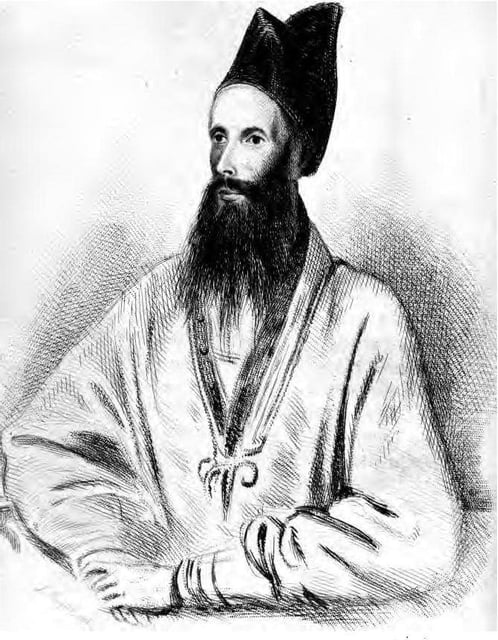 Cataleptic trances, enormous appetites, and giggling fits aside, W. B. O’Shaughnessy’s investigations at a Calcutta hospital into the potential of medical marijuana — the first such trials in modern medicine — were largely positive. Sujaan Mukherjee explores the intricacies of this pioneering research and what it can tell us more generally about the production of knowledge in colonial science.
Lofty Only in Sound: Crossed Wires and Community in 19th-Century Dreams
April 5, 2017
Poems & Science & History
Cataleptic trances, enormous appetites, and giggling fits aside, W. B. O’Shaughnessy’s investigations at a Calcutta hospital into the potential of medical marijuana — the first such trials in modern medicine — were largely positive. Sujaan Mukherjee explores the intricacies of this pioneering research and what it can tell us more generally about the production of knowledge in colonial science.
Lofty Only in Sound: Crossed Wires and Community in 19th-Century Dreams
April 5, 2017
Poems & Science & History
 Alicia Puglionesi explores a curious case of supposed dream telepathy at the end of the US Civil War, in which old ideas about the prophetic nature of dreaming collided with loss, longing, and new possibilities of communication at a distance.
American Freedom: Sinclair Lewis and the Open Road
March 22, 2017
Literature
Alicia Puglionesi explores a curious case of supposed dream telepathy at the end of the US Civil War, in which old ideas about the prophetic nature of dreaming collided with loss, longing, and new possibilities of communication at a distance.
American Freedom: Sinclair Lewis and the Open Road
March 22, 2017
Literature
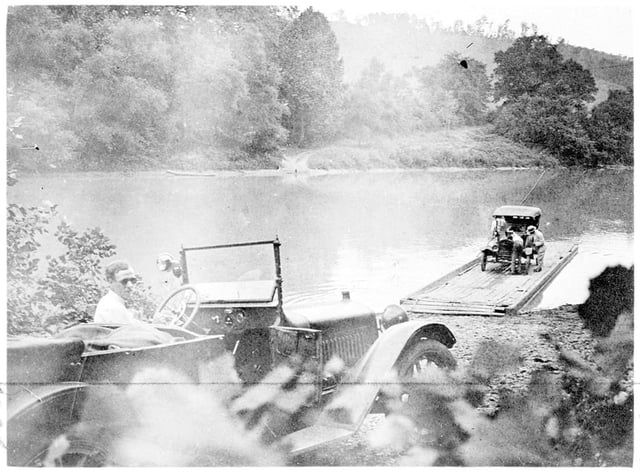 Some three decades before Kerouac and friends hit the road, Sinclair Lewis published Free Air, one of the very first novels about an automobile-powered road trip across the United States. Steven Michels looks at the particular vision of freedom espoused in the tale, one echoed throughout Lewis’ oeuvre.
Voltaire and the Buddha
March 8, 2017
Religion
Some three decades before Kerouac and friends hit the road, Sinclair Lewis published Free Air, one of the very first novels about an automobile-powered road trip across the United States. Steven Michels looks at the particular vision of freedom espoused in the tale, one echoed throughout Lewis’ oeuvre.
Voltaire and the Buddha
March 8, 2017
Religion
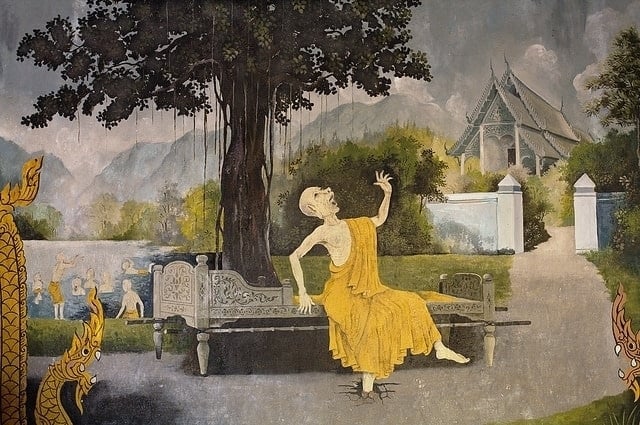 Donald S. Lopez, Jr. looks at Voltaire’s early reflections on Buddhism and how, in his desire to separate the Buddha’s teachings from the trappings of religion, the French Enlightenment thinker prefigured an approach now familiar in the West.
A Queer Taste for Macaroni
February 22, 2017
Art & History
Donald S. Lopez, Jr. looks at Voltaire’s early reflections on Buddhism and how, in his desire to separate the Buddha’s teachings from the trappings of religion, the French Enlightenment thinker prefigured an approach now familiar in the West.
A Queer Taste for Macaroni
February 22, 2017
Art & History
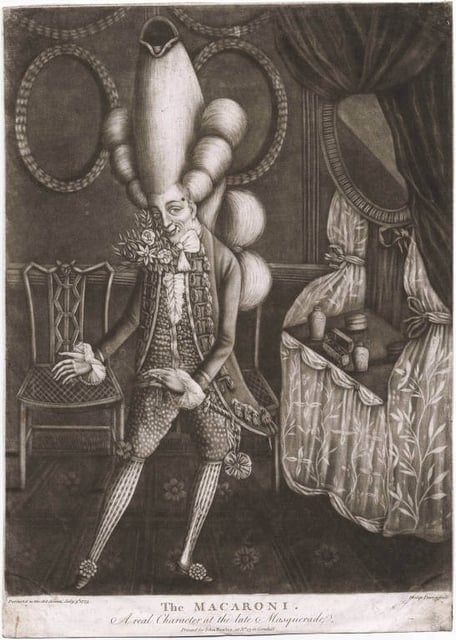 With his enormous hair, painted face, and dainty attire, the so-called “macaroni” was a common sight upon the streets and ridiculing prints of 1770s London. Dominic Janes explores how with this new figure — and the scandalous sodomy trials with which the stereotype became entwined — a widespread discussion of same-sex desire first entered the public realm, long before the days of Oscar Wilde.
George Washington: A Descendant of Odin?
February 8, 2017
Books & History & Religion
With his enormous hair, painted face, and dainty attire, the so-called “macaroni” was a common sight upon the streets and ridiculing prints of 1770s London. Dominic Janes explores how with this new figure — and the scandalous sodomy trials with which the stereotype became entwined — a widespread discussion of same-sex desire first entered the public realm, long before the days of Oscar Wilde.
George Washington: A Descendant of Odin?
February 8, 2017
Books & History & Religion
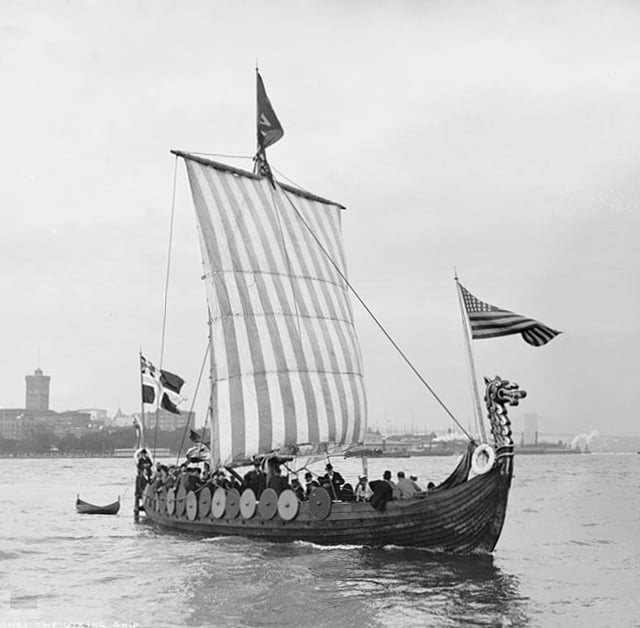 Yvonne Seale on a bizarre and fanciful piece of genealogical scholarship and what it tells us about identity in late 19th-century America.
Defoe and the Distance to Utopia
January 25, 2017
Books & Literature
Yvonne Seale on a bizarre and fanciful piece of genealogical scholarship and what it tells us about identity in late 19th-century America.
Defoe and the Distance to Utopia
January 25, 2017
Books & Literature
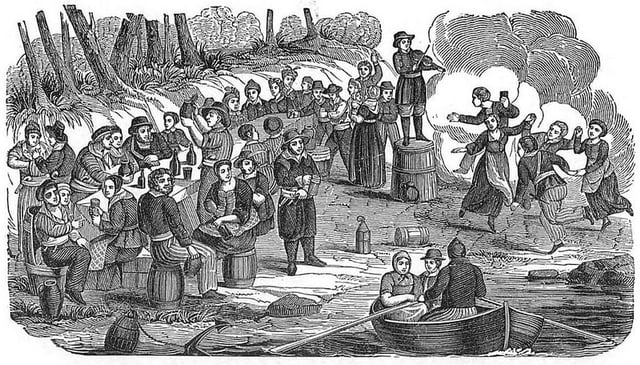 In the wake of recent political shifts and the dystopian flavour they carry for many, J.H. Pearl looks to the works of Daniel Defoe and the lessons they can teach us about bringing utopia home.
The Many Lives of the Medieval Wound Man
December 7, 2016
Science & Art
In the wake of recent political shifts and the dystopian flavour they carry for many, J.H. Pearl looks to the works of Daniel Defoe and the lessons they can teach us about bringing utopia home.
The Many Lives of the Medieval Wound Man
December 7, 2016
Science & Art
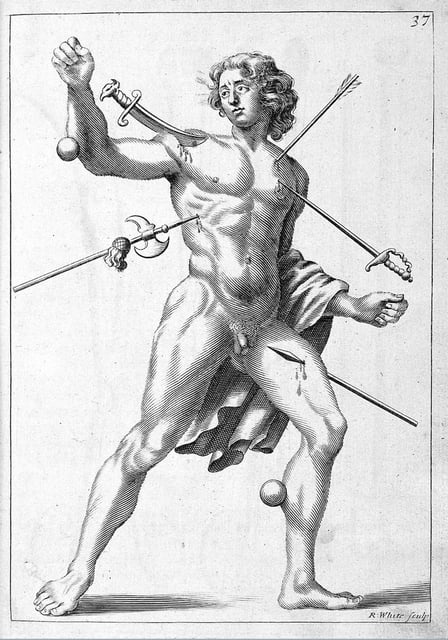 Sliced, stabbed, punctured, bleeding, harassed on all sides by various weaponry, the curious image of Wound Man is a rare yet intriguing presence in the world of medieval and early modern medical manuscripts. Jack Hartnell explores this enigmatic figure’s journey through the centuries.
Astral Travels with Jack London
November 22, 2016
Books & Literature
Sliced, stabbed, punctured, bleeding, harassed on all sides by various weaponry, the curious image of Wound Man is a rare yet intriguing presence in the world of medieval and early modern medical manuscripts. Jack Hartnell explores this enigmatic figure’s journey through the centuries.
Astral Travels with Jack London
November 22, 2016
Books & Literature
 On the centenary of Jack London’s death, Benjamin Breen looks at the writer’s last book to be published in his lifetime, The Star Rover — a strange tale about solitary confinement and interstellar reincarnation, which speaks to us of the dreams and struggles of the man himself.
“Let us Calculate!”: Leibniz, Llull, and the Computational Imagination
November 10, 2016
Science & Philosophy & History
On the centenary of Jack London’s death, Benjamin Breen looks at the writer’s last book to be published in his lifetime, The Star Rover — a strange tale about solitary confinement and interstellar reincarnation, which speaks to us of the dreams and struggles of the man himself.
“Let us Calculate!”: Leibniz, Llull, and the Computational Imagination
November 10, 2016
Science & Philosophy & History
 Three hundred years after the death of Gottfried Wilhelm Leibniz and seven hundred years after the death of Ramon Llull, Jonathan Gray looks at how their early visions of computation and the “combinatorial art” speak to our own age of data, algorithms, and artificial intelligence.
Richard Hakluyt and Early English Travel
October 26, 2016
Books & History
Three hundred years after the death of Gottfried Wilhelm Leibniz and seven hundred years after the death of Ramon Llull, Jonathan Gray looks at how their early visions of computation and the “combinatorial art” speak to our own age of data, algorithms, and artificial intelligence.
Richard Hakluyt and Early English Travel
October 26, 2016
Books & History
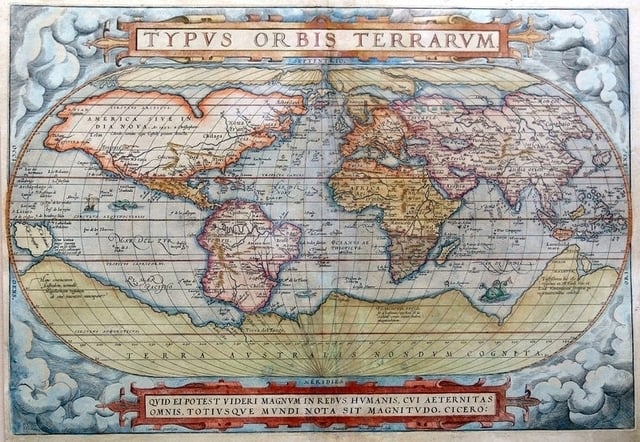 The Principle Navigations, Richard Hakluyt’s great championing of Elizabethan colonial exploration, remains one of the most important collections of English travel writing ever published. As well as the escapades of famed names such as Francis Drake and Walter Raleigh, Nandini Das looks at how the book preserves many stories of lesser known figures that surely would have been otherwise lost.
Harry Clarke’s Looking Glass
October 12, 2016
Art
With their intricate line and often ghoulish tone, the works of Irish artist Harry Clarke are amongst the most striking in the history of illustration and stained glass design. Kelly Sullivan explores how, unknown to many at the time, Clarke took to including his own face in many of his pictures.
Out of Their Love They Made It: A Visual History of Buraq
September 21, 2016
Art & Religion
The Principle Navigations, Richard Hakluyt’s great championing of Elizabethan colonial exploration, remains one of the most important collections of English travel writing ever published. As well as the escapades of famed names such as Francis Drake and Walter Raleigh, Nandini Das looks at how the book preserves many stories of lesser known figures that surely would have been otherwise lost.
Harry Clarke’s Looking Glass
October 12, 2016
Art
With their intricate line and often ghoulish tone, the works of Irish artist Harry Clarke are amongst the most striking in the history of illustration and stained glass design. Kelly Sullivan explores how, unknown to many at the time, Clarke took to including his own face in many of his pictures.
Out of Their Love They Made It: A Visual History of Buraq
September 21, 2016
Art & Religion
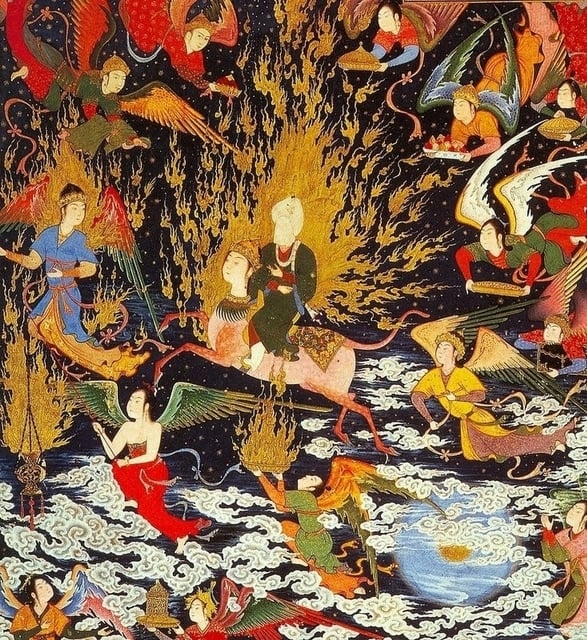 Although mentioned only briefly in the Qur’an, the story of the Prophet Muhammad’s night journey to heaven astride a winged horse called Buraq has long caught the imagination of artists. Yasmine Seale charts the many representations of this enigmatic steed, from early Islamic scripture to contemporary Delhi, and explores what such a figure can tell us about the nature of belief.
Visions of Algae in Eighteenth-Century Botany
September 7, 2016
Science
Although mentioned only briefly in the Qur’an, the story of the Prophet Muhammad’s night journey to heaven astride a winged horse called Buraq has long caught the imagination of artists. Yasmine Seale charts the many representations of this enigmatic steed, from early Islamic scripture to contemporary Delhi, and explores what such a figure can tell us about the nature of belief.
Visions of Algae in Eighteenth-Century Botany
September 7, 2016
Science
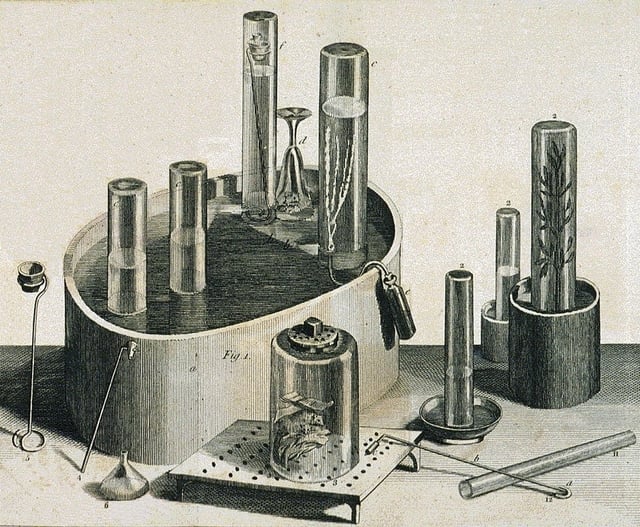 Although not normally considered the most glamorous of Mother Nature’s offerings, algae has found itself at the heart of many a key moment in the last few hundred years of botanical science. Ryan Feigenbaum traces the surprising history of one particular species — Conferva fontinalis — from the vials of Joseph Priestley’s laboratory to its possible role as inspiration for Shelley’s Frankenstein.
The Calcutta Pococurante Society: Public and Private in India’s Age of Reform
August 17, 2016
History
Although not normally considered the most glamorous of Mother Nature’s offerings, algae has found itself at the heart of many a key moment in the last few hundred years of botanical science. Ryan Feigenbaum traces the surprising history of one particular species — Conferva fontinalis — from the vials of Joseph Priestley’s laboratory to its possible role as inspiration for Shelley’s Frankenstein.
The Calcutta Pococurante Society: Public and Private in India’s Age of Reform
August 17, 2016
History
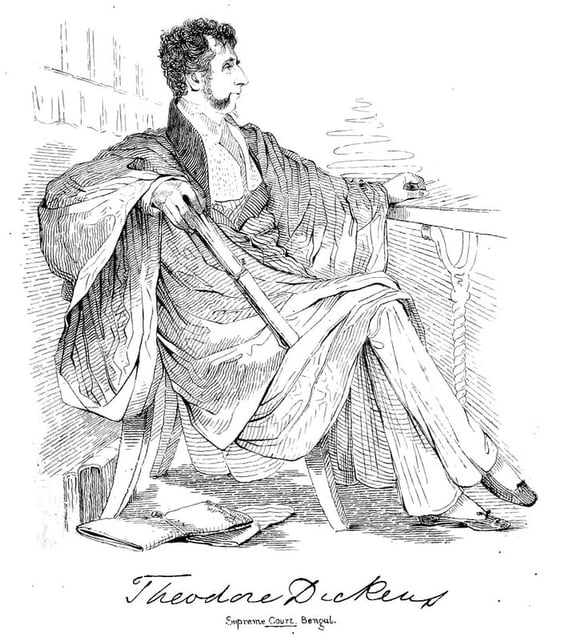 Joshua Ehrlich on an obscure text found on the shelves of a Bengali library and the light it sheds on the idea of the “public” in 19th-century Calcutta.
“Unlimiting the Bounds”: the Panorama and the Balloon View
August 3, 2016
Art & History
Joshua Ehrlich on an obscure text found on the shelves of a Bengali library and the light it sheds on the idea of the “public” in 19th-century Calcutta.
“Unlimiting the Bounds”: the Panorama and the Balloon View
August 3, 2016
Art & History
 The second essay in a two-part series in which Lily Ford explores how balloon flight transformed our ideas of landscape. Here she looks at the phenomenon of the panorama, and how its attempts at creating the immersive view were inextricably linked to the new visual experience opened up by the advent of ballooning.
“For the Sake of the Prospect”: Experiencing the World from Above in the Late 18th Century
July 20, 2016
Art & History
The second essay in a two-part series in which Lily Ford explores how balloon flight transformed our ideas of landscape. Here she looks at the phenomenon of the panorama, and how its attempts at creating the immersive view were inextricably linked to the new visual experience opened up by the advent of ballooning.
“For the Sake of the Prospect”: Experiencing the World from Above in the Late 18th Century
July 20, 2016
Art & History
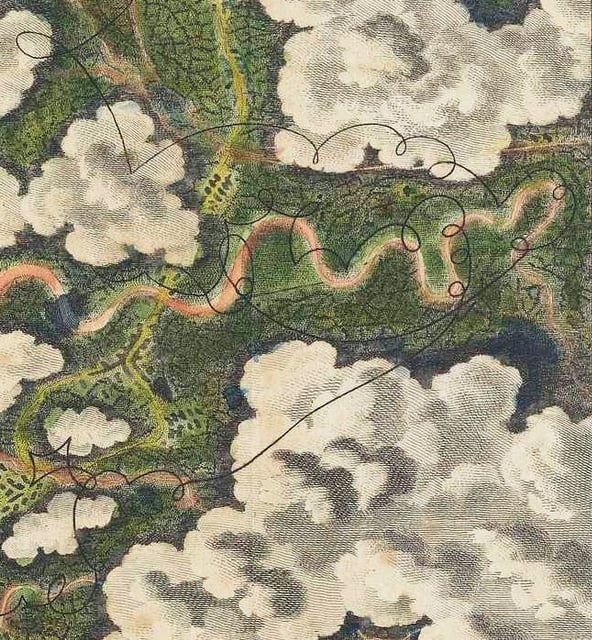 The first essay in a two-part series in which Lily Ford explores how balloon flight transformed our ideas of landscape. We begin with a look at the unique set of images included in Thomas Baldwin’s Airopaidia (1786) — the first “real” overhead aerial views.
The Secret History of Holywell Street: Home to Victorian London’s Dirty Book Trade
June 29, 2016
Photography & Literature & Art & History
The first essay in a two-part series in which Lily Ford explores how balloon flight transformed our ideas of landscape. We begin with a look at the unique set of images included in Thomas Baldwin’s Airopaidia (1786) — the first “real” overhead aerial views.
The Secret History of Holywell Street: Home to Victorian London’s Dirty Book Trade
June 29, 2016
Photography & Literature & Art & History
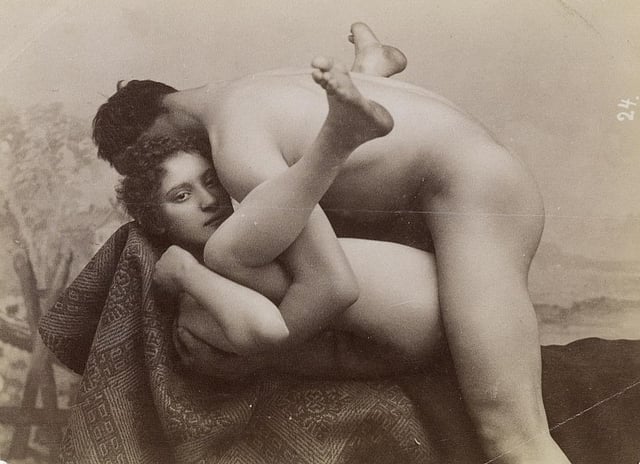 Victorian sexuality is often considered synonymous with prudishness, conjuring images of covered-up piano legs and dark ankle-length skirts. Historian Matthew Green uncovers a quite different scene in the sordid story of Holywell St, 19th-century London’s epicentre of erotica and smut.
Next page
Victorian sexuality is often considered synonymous with prudishness, conjuring images of covered-up piano legs and dark ankle-length skirts. Historian Matthew Green uncovers a quite different scene in the sordid story of Holywell St, 19th-century London’s epicentre of erotica and smut.
Next page
 John Bevis explores the various feats of cunning and subterfuge undertaken by the Kearton brothers — among the very first professional wildlife photographers — in their pioneering attempts to get ever closer to their subjects.
Woodcuts and Witches
May 4, 2017
Books & Art & History & Religion
John Bevis explores the various feats of cunning and subterfuge undertaken by the Kearton brothers — among the very first professional wildlife photographers — in their pioneering attempts to get ever closer to their subjects.
Woodcuts and Witches
May 4, 2017
Books & Art & History & Religion
 Jon Crabb on the witch-craze of Early Modern Europe, and how the concurrent rise of the mass-produced woodcut helped forge the archetype of the broom-riding crone — complete with cauldron and cats — so familiar today.
W. B. O’Shaughnessy and the Introduction of Cannabis to Modern Western Medicine
April 19, 2017
Science
Jon Crabb on the witch-craze of Early Modern Europe, and how the concurrent rise of the mass-produced woodcut helped forge the archetype of the broom-riding crone — complete with cauldron and cats — so familiar today.
W. B. O’Shaughnessy and the Introduction of Cannabis to Modern Western Medicine
April 19, 2017
Science
 Cataleptic trances, enormous appetites, and giggling fits aside, W. B. O’Shaughnessy’s investigations at a Calcutta hospital into the potential of medical marijuana — the first such trials in modern medicine — were largely positive. Sujaan Mukherjee explores the intricacies of this pioneering research and what it can tell us more generally about the production of knowledge in colonial science.
Lofty Only in Sound: Crossed Wires and Community in 19th-Century Dreams
April 5, 2017
Poems & Science & History
Cataleptic trances, enormous appetites, and giggling fits aside, W. B. O’Shaughnessy’s investigations at a Calcutta hospital into the potential of medical marijuana — the first such trials in modern medicine — were largely positive. Sujaan Mukherjee explores the intricacies of this pioneering research and what it can tell us more generally about the production of knowledge in colonial science.
Lofty Only in Sound: Crossed Wires and Community in 19th-Century Dreams
April 5, 2017
Poems & Science & History
 Alicia Puglionesi explores a curious case of supposed dream telepathy at the end of the US Civil War, in which old ideas about the prophetic nature of dreaming collided with loss, longing, and new possibilities of communication at a distance.
American Freedom: Sinclair Lewis and the Open Road
March 22, 2017
Literature
Alicia Puglionesi explores a curious case of supposed dream telepathy at the end of the US Civil War, in which old ideas about the prophetic nature of dreaming collided with loss, longing, and new possibilities of communication at a distance.
American Freedom: Sinclair Lewis and the Open Road
March 22, 2017
Literature
 Some three decades before Kerouac and friends hit the road, Sinclair Lewis published Free Air, one of the very first novels about an automobile-powered road trip across the United States. Steven Michels looks at the particular vision of freedom espoused in the tale, one echoed throughout Lewis’ oeuvre.
Voltaire and the Buddha
March 8, 2017
Religion
Some three decades before Kerouac and friends hit the road, Sinclair Lewis published Free Air, one of the very first novels about an automobile-powered road trip across the United States. Steven Michels looks at the particular vision of freedom espoused in the tale, one echoed throughout Lewis’ oeuvre.
Voltaire and the Buddha
March 8, 2017
Religion
 Donald S. Lopez, Jr. looks at Voltaire’s early reflections on Buddhism and how, in his desire to separate the Buddha’s teachings from the trappings of religion, the French Enlightenment thinker prefigured an approach now familiar in the West.
A Queer Taste for Macaroni
February 22, 2017
Art & History
Donald S. Lopez, Jr. looks at Voltaire’s early reflections on Buddhism and how, in his desire to separate the Buddha’s teachings from the trappings of religion, the French Enlightenment thinker prefigured an approach now familiar in the West.
A Queer Taste for Macaroni
February 22, 2017
Art & History
 With his enormous hair, painted face, and dainty attire, the so-called “macaroni” was a common sight upon the streets and ridiculing prints of 1770s London. Dominic Janes explores how with this new figure — and the scandalous sodomy trials with which the stereotype became entwined — a widespread discussion of same-sex desire first entered the public realm, long before the days of Oscar Wilde.
George Washington: A Descendant of Odin?
February 8, 2017
Books & History & Religion
With his enormous hair, painted face, and dainty attire, the so-called “macaroni” was a common sight upon the streets and ridiculing prints of 1770s London. Dominic Janes explores how with this new figure — and the scandalous sodomy trials with which the stereotype became entwined — a widespread discussion of same-sex desire first entered the public realm, long before the days of Oscar Wilde.
George Washington: A Descendant of Odin?
February 8, 2017
Books & History & Religion
 Yvonne Seale on a bizarre and fanciful piece of genealogical scholarship and what it tells us about identity in late 19th-century America.
Defoe and the Distance to Utopia
January 25, 2017
Books & Literature
Yvonne Seale on a bizarre and fanciful piece of genealogical scholarship and what it tells us about identity in late 19th-century America.
Defoe and the Distance to Utopia
January 25, 2017
Books & Literature
 In the wake of recent political shifts and the dystopian flavour they carry for many, J.H. Pearl looks to the works of Daniel Defoe and the lessons they can teach us about bringing utopia home.
The Many Lives of the Medieval Wound Man
December 7, 2016
Science & Art
In the wake of recent political shifts and the dystopian flavour they carry for many, J.H. Pearl looks to the works of Daniel Defoe and the lessons they can teach us about bringing utopia home.
The Many Lives of the Medieval Wound Man
December 7, 2016
Science & Art
 Sliced, stabbed, punctured, bleeding, harassed on all sides by various weaponry, the curious image of Wound Man is a rare yet intriguing presence in the world of medieval and early modern medical manuscripts. Jack Hartnell explores this enigmatic figure’s journey through the centuries.
Astral Travels with Jack London
November 22, 2016
Books & Literature
Sliced, stabbed, punctured, bleeding, harassed on all sides by various weaponry, the curious image of Wound Man is a rare yet intriguing presence in the world of medieval and early modern medical manuscripts. Jack Hartnell explores this enigmatic figure’s journey through the centuries.
Astral Travels with Jack London
November 22, 2016
Books & Literature
 On the centenary of Jack London’s death, Benjamin Breen looks at the writer’s last book to be published in his lifetime, The Star Rover — a strange tale about solitary confinement and interstellar reincarnation, which speaks to us of the dreams and struggles of the man himself.
“Let us Calculate!”: Leibniz, Llull, and the Computational Imagination
November 10, 2016
Science & Philosophy & History
On the centenary of Jack London’s death, Benjamin Breen looks at the writer’s last book to be published in his lifetime, The Star Rover — a strange tale about solitary confinement and interstellar reincarnation, which speaks to us of the dreams and struggles of the man himself.
“Let us Calculate!”: Leibniz, Llull, and the Computational Imagination
November 10, 2016
Science & Philosophy & History
 Three hundred years after the death of Gottfried Wilhelm Leibniz and seven hundred years after the death of Ramon Llull, Jonathan Gray looks at how their early visions of computation and the “combinatorial art” speak to our own age of data, algorithms, and artificial intelligence.
Richard Hakluyt and Early English Travel
October 26, 2016
Books & History
Three hundred years after the death of Gottfried Wilhelm Leibniz and seven hundred years after the death of Ramon Llull, Jonathan Gray looks at how their early visions of computation and the “combinatorial art” speak to our own age of data, algorithms, and artificial intelligence.
Richard Hakluyt and Early English Travel
October 26, 2016
Books & History
 The Principle Navigations, Richard Hakluyt’s great championing of Elizabethan colonial exploration, remains one of the most important collections of English travel writing ever published. As well as the escapades of famed names such as Francis Drake and Walter Raleigh, Nandini Das looks at how the book preserves many stories of lesser known figures that surely would have been otherwise lost.
Harry Clarke’s Looking Glass
October 12, 2016
Art
With their intricate line and often ghoulish tone, the works of Irish artist Harry Clarke are amongst the most striking in the history of illustration and stained glass design. Kelly Sullivan explores how, unknown to many at the time, Clarke took to including his own face in many of his pictures.
Out of Their Love They Made It: A Visual History of Buraq
September 21, 2016
Art & Religion
The Principle Navigations, Richard Hakluyt’s great championing of Elizabethan colonial exploration, remains one of the most important collections of English travel writing ever published. As well as the escapades of famed names such as Francis Drake and Walter Raleigh, Nandini Das looks at how the book preserves many stories of lesser known figures that surely would have been otherwise lost.
Harry Clarke’s Looking Glass
October 12, 2016
Art
With their intricate line and often ghoulish tone, the works of Irish artist Harry Clarke are amongst the most striking in the history of illustration and stained glass design. Kelly Sullivan explores how, unknown to many at the time, Clarke took to including his own face in many of his pictures.
Out of Their Love They Made It: A Visual History of Buraq
September 21, 2016
Art & Religion
 Although mentioned only briefly in the Qur’an, the story of the Prophet Muhammad’s night journey to heaven astride a winged horse called Buraq has long caught the imagination of artists. Yasmine Seale charts the many representations of this enigmatic steed, from early Islamic scripture to contemporary Delhi, and explores what such a figure can tell us about the nature of belief.
Visions of Algae in Eighteenth-Century Botany
September 7, 2016
Science
Although mentioned only briefly in the Qur’an, the story of the Prophet Muhammad’s night journey to heaven astride a winged horse called Buraq has long caught the imagination of artists. Yasmine Seale charts the many representations of this enigmatic steed, from early Islamic scripture to contemporary Delhi, and explores what such a figure can tell us about the nature of belief.
Visions of Algae in Eighteenth-Century Botany
September 7, 2016
Science
 Although not normally considered the most glamorous of Mother Nature’s offerings, algae has found itself at the heart of many a key moment in the last few hundred years of botanical science. Ryan Feigenbaum traces the surprising history of one particular species — Conferva fontinalis — from the vials of Joseph Priestley’s laboratory to its possible role as inspiration for Shelley’s Frankenstein.
The Calcutta Pococurante Society: Public and Private in India’s Age of Reform
August 17, 2016
History
Although not normally considered the most glamorous of Mother Nature’s offerings, algae has found itself at the heart of many a key moment in the last few hundred years of botanical science. Ryan Feigenbaum traces the surprising history of one particular species — Conferva fontinalis — from the vials of Joseph Priestley’s laboratory to its possible role as inspiration for Shelley’s Frankenstein.
The Calcutta Pococurante Society: Public and Private in India’s Age of Reform
August 17, 2016
History
 Joshua Ehrlich on an obscure text found on the shelves of a Bengali library and the light it sheds on the idea of the “public” in 19th-century Calcutta.
“Unlimiting the Bounds”: the Panorama and the Balloon View
August 3, 2016
Art & History
Joshua Ehrlich on an obscure text found on the shelves of a Bengali library and the light it sheds on the idea of the “public” in 19th-century Calcutta.
“Unlimiting the Bounds”: the Panorama and the Balloon View
August 3, 2016
Art & History
 The second essay in a two-part series in which Lily Ford explores how balloon flight transformed our ideas of landscape. Here she looks at the phenomenon of the panorama, and how its attempts at creating the immersive view were inextricably linked to the new visual experience opened up by the advent of ballooning.
“For the Sake of the Prospect”: Experiencing the World from Above in the Late 18th Century
July 20, 2016
Art & History
The second essay in a two-part series in which Lily Ford explores how balloon flight transformed our ideas of landscape. Here she looks at the phenomenon of the panorama, and how its attempts at creating the immersive view were inextricably linked to the new visual experience opened up by the advent of ballooning.
“For the Sake of the Prospect”: Experiencing the World from Above in the Late 18th Century
July 20, 2016
Art & History
 The first essay in a two-part series in which Lily Ford explores how balloon flight transformed our ideas of landscape. We begin with a look at the unique set of images included in Thomas Baldwin’s Airopaidia (1786) — the first “real” overhead aerial views.
The Secret History of Holywell Street: Home to Victorian London’s Dirty Book Trade
June 29, 2016
Photography & Literature & Art & History
The first essay in a two-part series in which Lily Ford explores how balloon flight transformed our ideas of landscape. We begin with a look at the unique set of images included in Thomas Baldwin’s Airopaidia (1786) — the first “real” overhead aerial views.
The Secret History of Holywell Street: Home to Victorian London’s Dirty Book Trade
June 29, 2016
Photography & Literature & Art & History
 Victorian sexuality is often considered synonymous with prudishness, conjuring images of covered-up piano legs and dark ankle-length skirts. Historian Matthew Green uncovers a quite different scene in the sordid story of Holywell St, 19th-century London’s epicentre of erotica and smut.
Next page
Victorian sexuality is often considered synonymous with prudishness, conjuring images of covered-up piano legs and dark ankle-length skirts. Historian Matthew Green uncovers a quite different scene in the sordid story of Holywell St, 19th-century London’s epicentre of erotica and smut.
Next page